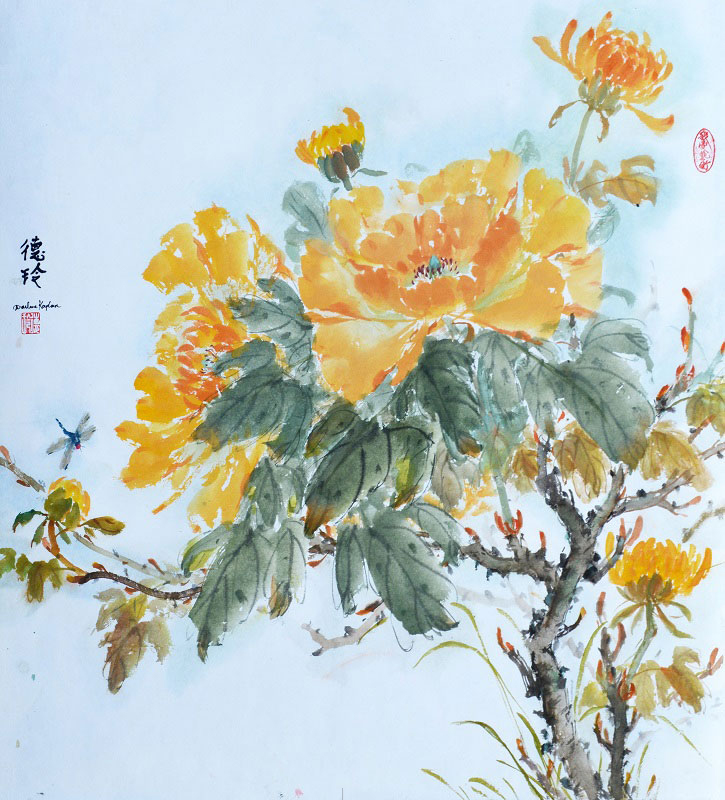

The artist’s career can be described as an unpredictable terrain of hills and valleys. Unfortunately, an art school diploma doesn’t come with a career manual or map to help us navigate it. So, it’s up to us to either plan for success or wait for failure.
Early in my career I learned to improve my success rate by bonding with other artists and learning from each other’s experiences. With this idea, I recently launched “Advice To Artists From Artists,” an ongoing series of interviews. The artists I interview, in addition to having successful careers, are active in their art communities. This article includes excerpts from those interviews. Read the full-length interviews here.
Create a complementary plan.
Elynne Rosenfeld, is an award-winning painter and active leader in the Philadelphia art community. She has served as past president of Artist’s Equity and currently sits on the board of ARTsisters, which brings exhibitions to the community and donates part of sales to charities.
Rosenfeld encourages artists to be realistic and advises, “Don’t go into art expecting that it will be lucrative, especially in the current market. But if you love it, learn something compatible with your need to create. This can either be in a related field such as design, graphics, etc., or something totally unrelated that doesn’t exhaust your creativity. Either way, it should provide income freeing you to do what you love.”
She adds, “Don’t let go of the dream that it might turn into something more for you. Dreaming is healthy for the creative spirit, as long as you are also grounded.”
With this in mind, it is essential to prepare an art business plan as early as possible in your career and revise it as often as necessary. It will provide a solid foundation and direction, as well as build self-confidence. For step-by-step guidelines, read How to Create Your Art Business Plan.
Trust your intuition.
As a career coach, whenever an artist asks me to help them decide which artistic direction they should pursue I immediately ask, “What inspires you the most? Where do you feel most authentic in your self-expression?” No one can answer this question for the artist.
Offering superb advice on this topic is Bren Sibilsky, a full-time sculptor, painter, teacher and founder of Algoma Atelier of Sculpture and Art in Wisconsin. Her advice is, “Follow your intuition and passion. Early in my career everyone would offer me suggestions on what I should be doing to earn a buck. I think that is fine if it also feeds your passion.”
Sibilsky emphasizes, “If you don’t wake up excited about what you’re doing or creating, you won’t last in the long run. The road to art has many ups and downs, so it is important that you be your biggest cheerleader and be fully engaged in your passion of making your art.”

Build a community of support.
Camaraderie has been a guiding principle throughout my long and rewarding career. As an art student I founded an organization to help fellow artists get exposure and have launched different groups since. For an artist, being a member of regional as well as international groups is essential.
An artist who shares this belief is Darlene Kaplan, an award-winning professional artist, owner, CEO of Soft Brush Studio and instructor who lives in Virginia. She credits the art community for her career success and advises artists to, “Join all local art organizations. When I first started to take my art seriously I joined every local art organization that I knew of. Attending meetings and socializing with members helped to get established in the art community. All of the art organizations held juried and non-juried art exhibitions which I entered.”
Kaplan walks the talk. She belongs to 13 arts organizations including the National Sumi-e Society and is the president of the National Chapter.
Throughout your career, you will benefit from being pragmatic when necessary as well as trusting your instincts. And, most of all, if you continue to reach out to fellow artists for mutual support, you will be able to climb more hills and avoid many pitfalls.
Renée Phillips, The Artrepreneur Coach, helps artists attain their fullest potential in private consultations, coaching sessions, articles and e-Books found on www.Renee-Phillips.com. She is also founder/director of Manhattan Arts International and The Healing Power of ART & ARTISTS. Follow her on Twitter @reneephillipsny and join her on Facebook ReneePhillipsArtCoach.



